Emergency Evacuations of Buildings

Topics to be covered
- Evacuation procedures
- Your responsibilities during an evacuation
- Other roles involved in evacuations are Chief Warden, Wardens, First Aid Officers and Emergency Services.
- Various tools that will help you during an evacuation

1. Three reasons why building evacuation might be required
1
If there is an internal threat to safety or life
2
If you hear a fire alarm (see below)
3
If told to evacuate by a member of the Emergency Response Team, Emergency Services or a warden
2. From our Emergency Procedures (Code Orange Response) all building occupants need to know how to “Self Evacuate"
Occupants are required to self-evacuate when they hear the fire alarm evacuation tone. What other actions should evacuees take? Select the correct answers below.
If you can't see a warden you must self-evacuate when you hear the fire alarm evacuation tone.
3. What are my responsibilities as a general staff/student?
ANSWERS
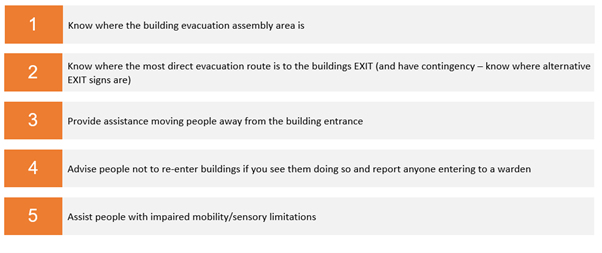

4. How do I identify Assembly Area locations?
Emergency Evacuation Guides
Emergency Evacuation Guides should be located in high-use areas and indicate exit and evacuation routes and assembly areas. All building occupants must read the Emergency Evacuation Guide relevant to their building.
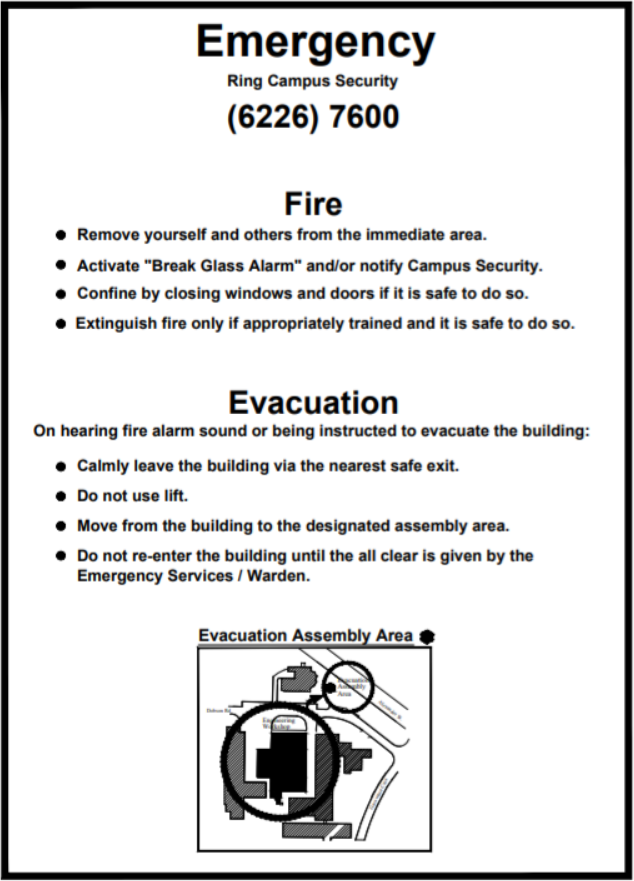
Emergency Evacuation Guide (UTAS 2018)
Emergency Evacuation Guide (UTAS 2018)
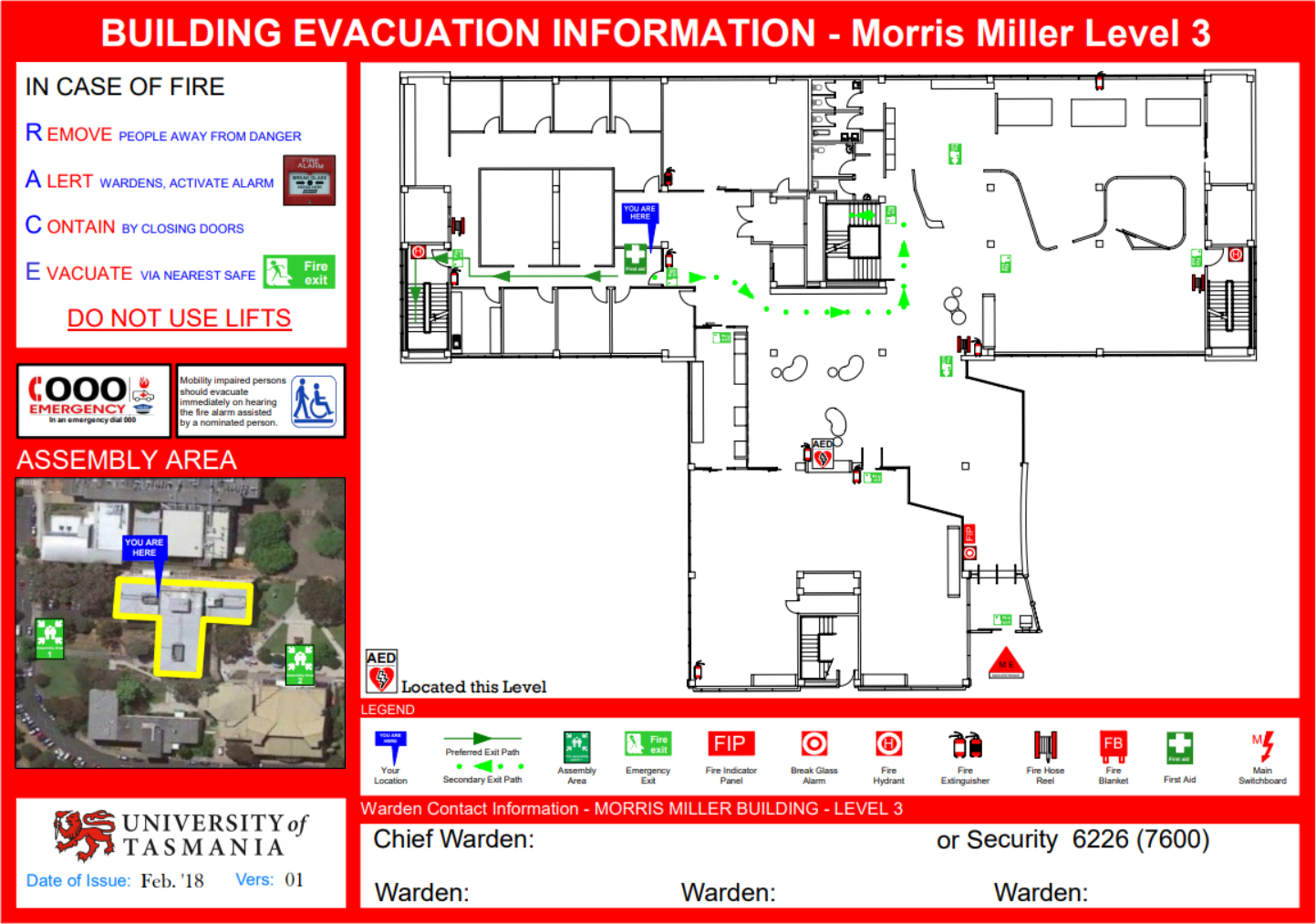
Emergency Evacuation Guide (UTAS 2018)
Emergency Evacuation Guide (UTAS 2018)
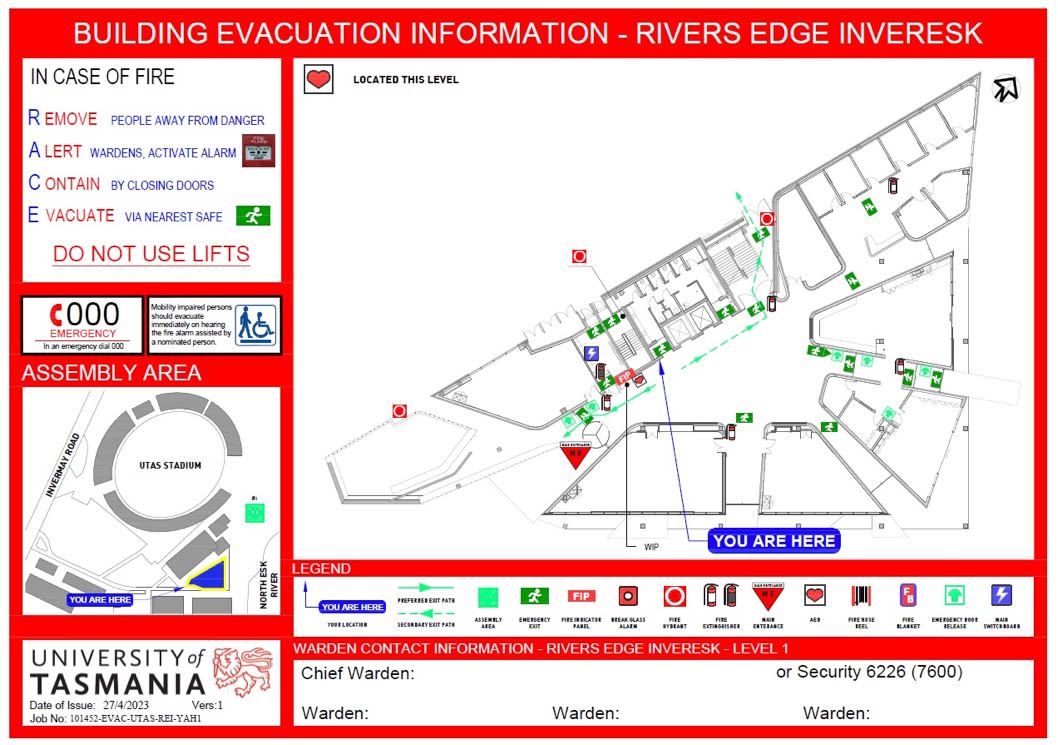
Emergency Evacuation Guide (UTAS 2023)
Emergency Evacuation Guide (UTAS 2023)
These Emergency Evacuation Guides give information on:
- actions to take in the event of a fire.
- actions to take when evacuating a building.
- routes to take when exiting a building.
- location of assembly areas.
Assembly Areas at the University
Click on each of the hotspots to view the assembly areas and the buildings they relate to.
Sandy Bay Campus:
Hobart City:
Taroona:
Newnham:
Inveresk:
Cradle Coast:
Rozelle, Sydney:

5. How do I identify Safe Evacuation routes?
Exiting and Evacuating
Exit paths can also be blocked by items incorrectly stored. Please ensure all exits remain clear and useable at all times.
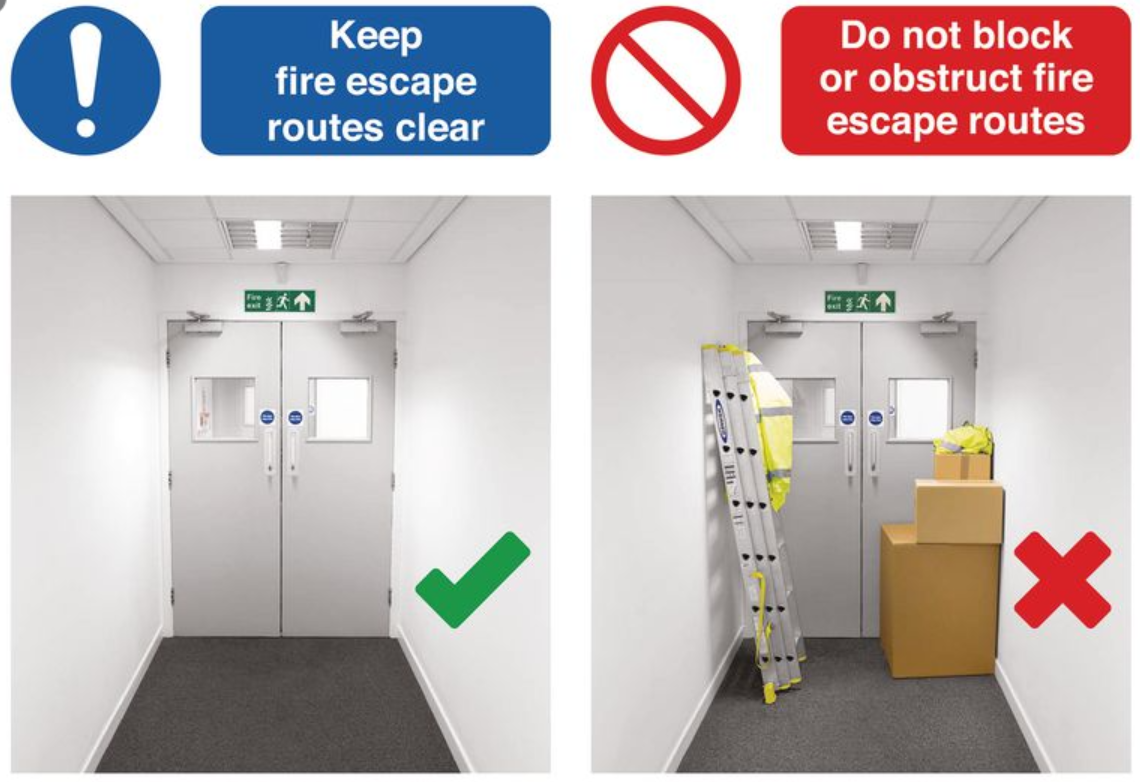
(FireTech Electrical Systems 2021)
(FireTech Electrical Systems 2021)
- Via Floor based building evacuation guides.
6. What do Chief Wardens do during an evacuation?
A Chief Warden is responsible for managing all operations so that occupants exit an emergency safely.
Tasks of a Chief Warden
Persons designated as Chief Wardens should:
- Attend to Warden duties and then meet other Warden/s at Warden Meeting Point near the Fire
Indicator Panel (providing it is safe to do so). If this area is unsafe, wardens should meet at the
nearest safe Assembly Area. - If the incident is “real”, call 000 and advise Emergency Services
- Confirm with Wardens:
- That persons have been deployed to prevent access to the building
- That their designated areas have been thoroughly checked and no persons have been left
behind.
- The location/identification of any locked rooms which could not be physically checked - Report the results of the building evacuation (including any rooms not checked and location and
identity of staff positioned outside entrances) to University Security if they attend, or advise the
Security Control room (6226 7600) in their absence. - Continue to check on well‐being of staff outside entrances until the all clear has been given.
- Providing it is safe to do so, remain at Warden Meeting Point until no longer required then proceed
to Assembly Area. - Chief Wardens can initiate an evacuation if their local or specialist knowledge is appropriate to the
situation. - Link to existing Warden Training Document
7. What do Wardens do during an evacuation?
A Warden is responsible for ensuring occupants are safely evacuating a building.
Tasks of a Warden
On hearing an Evacuation Alarm tone or bell or on being instructed to evacuate, or if it becomes necessary to
evacuate the area, floor or building:
- In applicable areas, subject to staff availability and providing it is safe to do so, designate staff to
take up positions outside the entrances to the building (or area if local emergency) and prevent
persons from entering. - Progressively move through your area advising persons to evacuate ‐ indicate their nearest safe exit
and where they should assemble after the evacuation. - If your area is large in size or complex in its layout, where possible, obtain assistance from other
staff and designate particular areas for them to check and then report back to you. - If your area includes rooftop access, then check this area as well (providing they are usually
accessible and it is safe to do so). - Providing it is safe to do so, retrace your steps checking each room/area to ensure that no one is
left behind. - If any rooms are locked, knock firmly, loudly announce the emergency, wait momentarily for any
response and then move on, noting the room number or location. - Where applicable, check with staff assisting that they have checked their designated areas and all
persons have evacuated. - Leave the area and report to the Chief Warden at the Warden Meeting Point near the Fire Indicator
Panel (providing it is safe to do so). If this area is unsafe, wardens should meet at their Assembly
Area. - Inform the Chief Warden that your area has been evacuated and checked (also any rooms which
could not be physically checked) and then unless otherwise required, proceed to the Assembly Area.
8. How do I know who are Wardens in my building?
- Link to Warden database: https://amis.utas.edu.au/Warden/